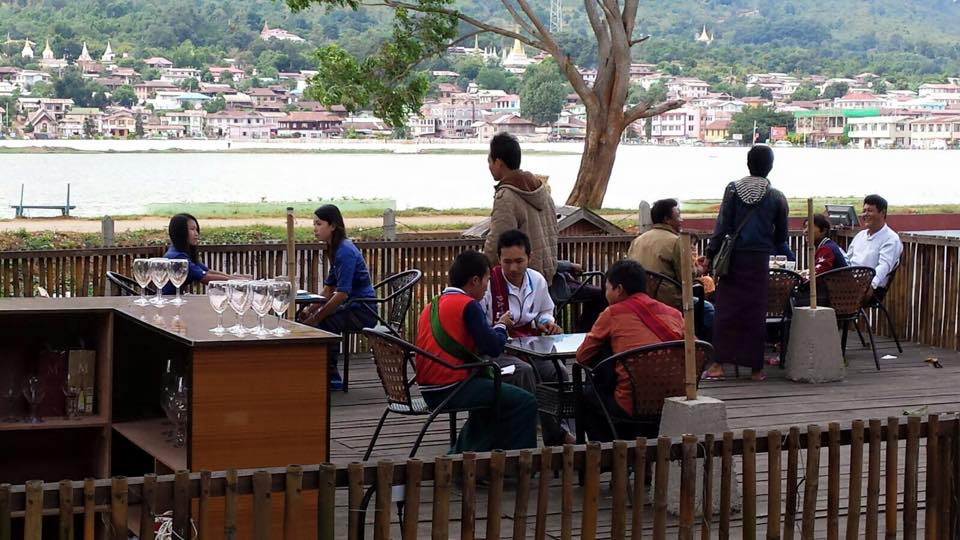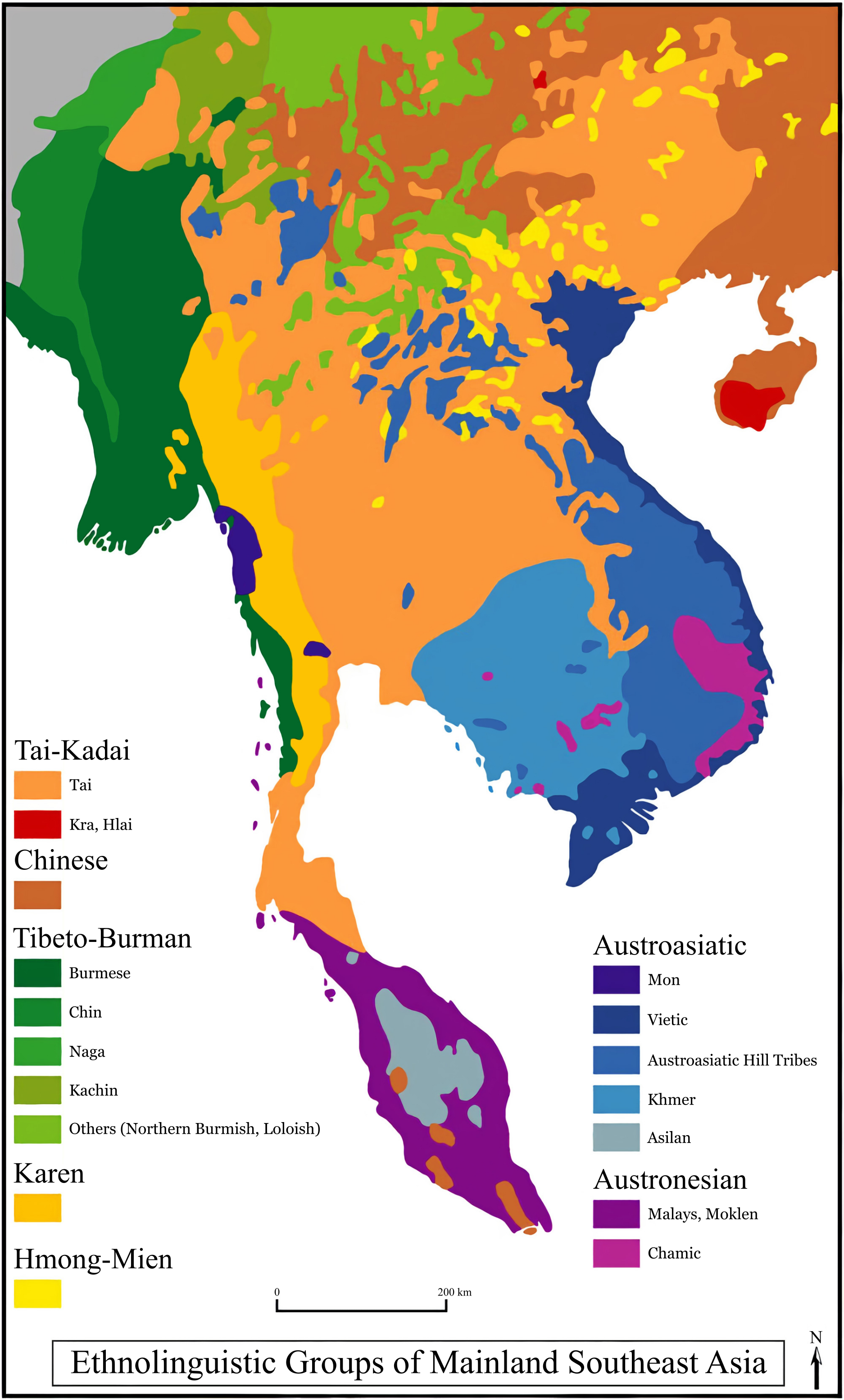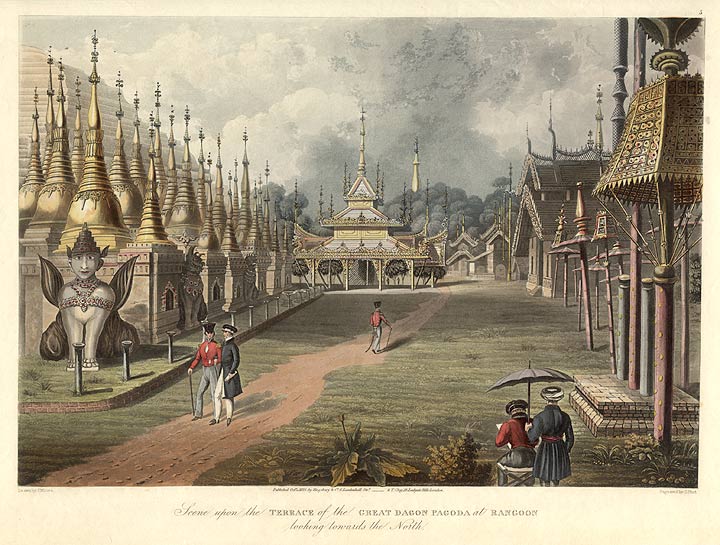|
Danaw Language
Danau, also spelled Htanaw or Danaw (), is an Austroasiatic language of Myanmar (Burma). It is the most divergent member of the Palaungic languages, Palaungic branch (Sidwell 2010). According to community estimates (2023), Danau is spoken by about 3,000 people in six villages near Aungban, Kalaw Township, Shan State. Danau was described as a "critically endangered" language in UNESCO's 2010 ''Atlas of the World’s Languages in Danger.'' Name Danau is the most common English form of the ethnonym; the Danau themselves pronounce the name of their ethnic group and language as . The meaning and origin of the name are unknown. Zaw Lwin Oo (2021:35) states that the endonym ''kənɒ̀'' means 'the people who like to live peacefully' (အေးအေးဆေးဆေး နေတတ်သောလူမျိုး). This etymology of the name is unknown to the native speakers, though, and no related word is found in the present-day language. Speakers The Danau are a little known ethni ... [...More Info...] [...Related Items...] OR: [Wikipedia] [Google] [Baidu] |
Burma
Myanmar, officially the Republic of the Union of Myanmar; and also referred to as Burma (the official English name until 1989), is a country in northwest Southeast Asia. It is the largest country by area in Mainland Southeast Asia and has a population of about 55 million. It is bordered by India and Bangladesh to its northwest, China to its northeast, Laos and Thailand to its east and southeast, and the Andaman Sea and the Bay of Bengal to its south and southwest. The country's capital city is Naypyidaw, and its largest city is Yangon (formerly Rangoon). Early civilisations in the area included the Tibeto-Burman-speaking Pyu city-states in Upper Myanmar and the Mon kingdoms in Lower Myanmar. In the 9th century, the Bamar people entered the upper Irrawaddy valley, and following the establishment of the Pagan Kingdom in the 1050s, the Burmese language and culture and Theravada Buddhism slowly became dominant in the country. The Pagan Kingdom fell to Mongol invas ... [...More Info...] [...Related Items...] OR: [Wikipedia] [Google] [Baidu] |
Pindaya
Pindaya ( ''Pìñṯáyá myoú'') is the capital of the Danu Self-Administered Zone in Shan State, east-central Myanmar. It is located in Pindaya Township. Mainly famous for its limestone caves called Pindaya Caves where thousands of Buddha Siddhartha Gautama, most commonly referred to as the Buddha (),* * * was a wandering ascetic and religious teacher who lived in South Asia during the 6th or 5th century BCE and founded Buddhism. According to Buddhist legends, he was ... images have been consecrated for worship over the centuries, it is also one of the towns that host an itinerant market every fifth day. Etymology According to local legend, the term ''Pindaya'' is a corruption of the word Pinguya, which translates to ''Taken the Spider'' in Burmese. The name arose from the legend that there was once a large spider which resided in the caves and it had captured a local princess. The princess was rescued when the giant spider was slain by a prince using a bow a ... [...More Info...] [...Related Items...] OR: [Wikipedia] [Google] [Baidu] |
Mainland Southeast Asia Linguistic Area
The Mainland Southeast Asia linguistic area is a sprachbund including languages of the Sino-Tibetan, Hmong–Mien (or Miao–Yao), Kra–Dai, Austronesian and Austroasiatic families spoken in an area stretching from Thailand to China. Neighbouring languages across these families, though presumed unrelated, often have similar typological features, which are believed to have spread by diffusion. James Matisoff referred to this area as the "Sinosphere", contrasted with the " Indosphere", but viewed it as a zone of mutual influence in the ancient period. Language distribution The Austroasiatic languages include Vietnamese and Khmer, as well as many other languages spoken in scattered pockets as far afield as Malaya and eastern India. Most linguists believe that Austroasiatic languages once ranged continuously across southeast Asia and that their scattered distribution today is the result of the subsequent migration of speakers of other language groups from southern China. Chin ... [...More Info...] [...Related Items...] OR: [Wikipedia] [Google] [Baidu] |
Tone (linguistics)
Tone is the use of pitch (music), pitch in language to distinguish lexical or grammatical meaning—that is, to distinguish or to inflection, inflect words. All oral languages use pitch to express emotional and other para-linguistic information and to convey emphasis, contrast and other such features in what is called intonation (linguistics), intonation, but not all languages use tones to distinguish words or their inflections, analogously to consonants and vowels. Languages that have this feature are called tonal languages; the distinctive tone patterns of such a language are sometimes called tonemes, by analogy with ''phoneme''. Tonal languages are common in East Asia, East and Southeast Asia, Africa, the Americas, and the Pacific islands, Pacific. Tonal languages are different from pitch-accent languages in that tonal languages can have each syllable with an independent tone whilst pitch-accent languages may have one syllable in a word or morpheme that is more prominent t ... [...More Info...] [...Related Items...] OR: [Wikipedia] [Google] [Baidu] |
Minor Syllable
Primarily in Austroasiatic languages (also known as Mon–Khmer), in a typical word, a minor syllable, presyllable, or sesquisyllable, is a reduced (minor) syllable followed by a full tonic or stressed syllable. The minor syllable may be of the form or , with a reduced vowel, as in colloquial Khmer, or of the form with no vowel at all, as in Mlabri 'navel' (minor syllable ) and 'underneath' (minor syllable ), and Khasi 'rule' (minor syllable ), ''syrwet'' 'sign' (minor syllable ), 'transform' (minor syllable ), 'seed' (minor syllable ) and ''tyngkai'' 'conserve' (minor syllable ). This iambic pattern is sometimes called sesquisyllabic (lit. 'one and a half syllables'), a term coined by the American linguist James Matisoff in 1973 (Matisoff 1973:86). Although the term may be applied to any word with an iambic structure, it is more narrowly defined as a syllable with a consonant cluster whose phonetic realization is ǝC In historical linguistics Sometimes minor syl ... [...More Info...] [...Related Items...] OR: [Wikipedia] [Google] [Baidu] |
Shan Language
Shan is the native language of the Shan people and is mostly spoken in Shan State, Myanmar. It is also spoken in pockets in other parts of Myanmar, in Northern Thailand, in Yunnan, in Laos, in Cambodia, in Vietnam and decreasingly in Assam and Meghalaya. Shan is a member of the Kra–Dai language family and is related to Thai. It has five tones, which do not correspond exactly to Thai tones, plus a sixth tone used for emphasis. The term Shan is also used for related Northwestern Tai languages, and it is called Tai Yai or Tai Long in other Tai languages. Standard Shan, which is also known as Tachileik Shan, is based on the dialect of the city of Tachileik. In 2019, Ethnologue estimated there were 3.3 million Shan speakers, including 3.2 million in Myanmar. The Mahidol University Institute for Language and Culture estimates there are gave the number of Shan speakers in Thailand as 95,000 in 2006. Many Shan speak local dialects as well as the language of their trading partners. ... [...More Info...] [...Related Items...] OR: [Wikipedia] [Google] [Baidu] |
Taungyo
The Taungyo ( ''Tauñyoù lumyoù'') are a sub-ethnic group of the Bamar people living primarily in Shan State and centered on Pindaya. Language They speak Taungyo (တောင်ရိုးစကား Tauñyoùs̱áḵà), a Tavoyan dialect of the Burmese language. Taungyo has 89% lexical similarity with standard Burmese, and is also closely related to Intha-Danu language, Danu, Intha and Rakhine language, Rakhine. A sample of Taungyo dialect vocabulary include the following: *red - ''anak (အနီ)'' *high - ''amrang'' () *eye - ''myak-sai'' () *light - ''lang'' () References {{Ethnic groups in Burma Ethnic groups in Myanmar Bamar people ... [...More Info...] [...Related Items...] OR: [Wikipedia] [Google] [Baidu] |
Intha Language
Intha and Danu are southern Burmish languages of Shan State, Burma, spoken respectively by the Intha and Danu people, the latter of whom are Bamar descendants who migrated to Inle Lake in Shan State. Considered to be dialects of Burmese by the Government of Myanmar, Danu has 93% lexical similarity with standard Burmese, while Intha has 95% lexical similarity with standard Burmese. Intha and Danu differ from standard Burmese with respect to pronunciation of certain phonemes, and few hundred local vocabulary terms. Language contact has led to increasing convergence with standard Burmese. Both are spoken by about 100,000 people each. Phonology Both Danu and Intha are characterized by retention of the medial (for the following consonant clusters in Intha: ). Examples include:*"full": Standard Burmese () → (), from old Burmese *"ground": Standard Burmese () → (), from old Burmese There is no voicing with the presence of either aspirated or unaspirated consonants. For ... [...More Info...] [...Related Items...] OR: [Wikipedia] [Google] [Baidu] |
Pa'O Language
The Pa'O language (also spelled Pa-O or Pa-oh; , ); ), sometimes called Taungthu, is a Karen language spoken by close to 900,000 Pa'O people in Myanmar. The language is primarily written using a Burmese script alphabet devised by Christian missionaries, and many of the materials now available for it on the Internet derive from Christian missionary involvement, although most of the Pa'O are generally reported to be Buddhists (without real statistics, etc.). The language is also referred to by the exonyms "Black Karen" and "White Karen", both of which are terms used in contrast to " Red Karen" (Karenni), also of Myanmar. Dialects include Taunggyi and Thaton. Phonology The following displays the phonological features of the Pa'O (Taungthu) language: Consonants * /p, t, k, ʔ/ and /m, n, ŋ/ can occur as final consonants. Stops may also be heard as unreleased ̚, t̚, k̚ Vowels Writing system Pa'O is written using a modified version of the Mon-Burmese script. ... [...More Info...] [...Related Items...] OR: [Wikipedia] [Google] [Baidu] |
Pa'O People
The Pa'O (; , , or ; ; Eastern Poe Karen: တံင်သူ; ; also spelt Pa-O or Paoh) are an ethnic minority living in Myanmar, with a population of roughly 1,200,000 accounting for approximately 2.1% of the total population in Myanmar. Other names of the Pa-O include PAOH, PaU, Taungthu, Taungsu, Tongsu and Kula. History The Pa'O settled in the Thaton region of present-day Myanmar around 1700 BC. Historically, the Pa'O wore colourful clothing until King Anawratha defeated the Mon King, Makuta of Thaton(also called Manuha). The Pa'O were enslaved and forced to wear indigo-dyed clothing to signify their status. People The Pa'O people are the second largest ethnic group in Shan State. They also reside in Kayin State, Kayah State, Mon State, and Bago Division. Many of the modern day Pa'O have fled to Mae Hong Son Province, in northern Thailand, due to ongoing military conflicts in Myanmar. They are believed to be of Tibeto-Burman lineage, and share the language and cultu ... [...More Info...] [...Related Items...] OR: [Wikipedia] [Google] [Baidu] |
Pali
Pāli (, IAST: pāl̤i) is a Classical languages of India, classical Middle Indo-Aryan languages, Middle Indo-Aryan language of the Indian subcontinent. It is widely studied because it is the language of the Buddhist ''Pali Canon, Pāli Canon'' or ''Tripiṭaka, Tipiṭaka'' as well as the sacred language of ''Theravada, Theravāda'' Buddhism. Pali was designated as a Classical languages of India, classical language by the Government of India on 3 October 2024. Origin and development Etymology The word 'Pali' is used as a name for the language of the Theravada canon. The word seems to have its origins in commentarial traditions, wherein the (in the sense of the line of original text quoted) was distinguished from the commentary or vernacular translation that followed it in the manuscript. K. R. Norman suggests that its emergence was based on a misunderstanding of the compound , with being interpreted as the name of a particular language. The name Pali does not appear in t ... [...More Info...] [...Related Items...] OR: [Wikipedia] [Google] [Baidu] |
Konbaung Dynasty
The Konbaung dynasty (), also known as the Third Burmese Empire (တတိယမြန်မာနိုင်ငံတော်), was the last dynasty that ruled Burma from 1752 to 1885. It created the second-largest empire in history of Myanmar, Burmese history and continued the administrative reforms begun by the Toungoo dynasty, laying the foundations of the modern state of Burma. The reforms, however, proved insufficient to stem the advance of the British Empire, who defeated the Burmese in all three Anglo-Burmese Wars over a six-decade span (1824–1885) and ended the millennium-old Burmese monarchy in 1885. Pretenders to the dynasty claim descent from Myat Phaya Lat, one of Thibaw's daughters. An expansionist dynasty, the Konbaung kings waged campaigns against the Mizo Chieftainship, Lushai Hills, Möng Mao, Manipur, Assam, Kingdom of Mrauk U, Arakan, the Mon people, Mon kingdom of Restored Hanthawaddy Kingdom, Pegu, Siam, and the Qing dynasty of China—thus establis ... [...More Info...] [...Related Items...] OR: [Wikipedia] [Google] [Baidu] |





